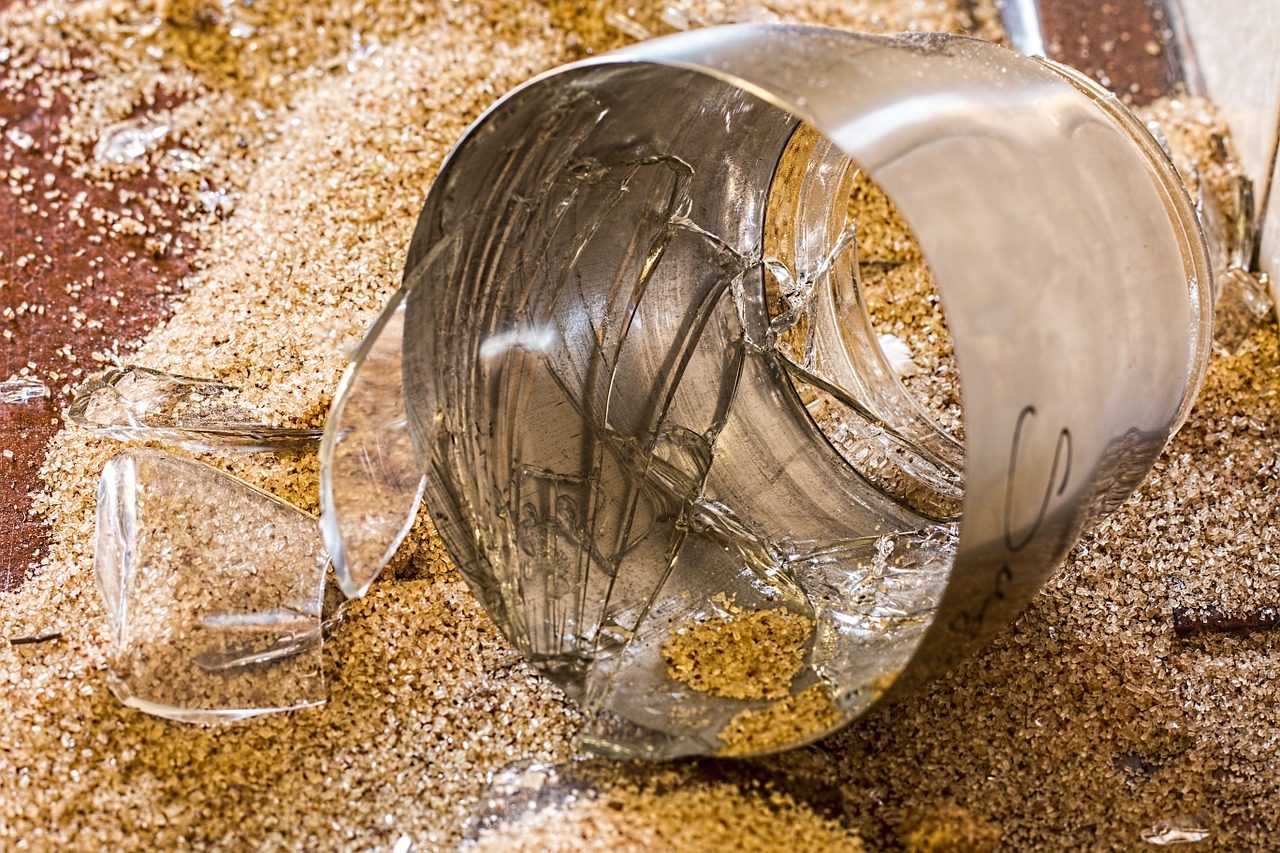It’s confession time: I have an addiction. It started years ago. Short on cash but high on creativity, secondhand stores and antique shops became my go-to spots for getting stuff.
I figured someone’s trash could become my treasure, with the help of some power tools, paint, and my sewing machine. (Thanks to Pinterest and DIY Web sites, how-to videos are plentiful when I’m in a pinch.)
Over time, I’ve noticed a trend. A lot of great stuff gets tossed out because of a little chip or dent, a scratch here, a tear there. How quickly we tend to diminish an object’s value if there’s a slight imperfection. We want something . . .
- Bigger
- Better
- Glossy
- Polished to perfection
Mending Cracks
While preparing for an interview recently, I came across a restoration process dating back to the 1500s called “Kintsugi” (sounds like “kent-soo-gee”).
The ancient Japanese tradition was founded on the belief that broken things (ceramics and fine china) have greater value when restored using the Kintsugi process.
Here’s how Kintsugi works: the restorer places a fine ceramic glue on the cracks or broken pieces of china then brushes over the glue with very fine, exquisite flecks of real gold.
When the piece has no replacement for the broken or chipped spot, another piece is fitted into the place which adds value because it requires the use of more gold.
It is common to find these restored Kintsugi pieces in places of royalty, as well as in common homes. The beauty and color of this china lined with layers of gold is remarkable.
You probably know where I’m going with this metaphor. Why is it that, most often, we devalue broken things . . . and broken people?
If someone has a visual deformity or mental disability, for example, often we consider the person to be of less value—and sometimes of little to no value.
But here’s the catch: Scripture clearly communicates that our human condition is flawed . . . broken beyond repair. Our value comes totally and completely from Christ, the Creator of each priceless life, who promises to restore our broken souls.

While on earth and without Christ, we ALL are damaged goods; imperfect, weak, laden with cracks and holes in all our humanity.
In his gospel, the apostle John writes about faith in Jesus Christ using the word believe or believing, followed by a preposition which means “into,” signifying that faith in Jesus Christ is to be active, dynamic, transforming, ongoing . . . a commitment that changes our attitudes and actions through life.
- John 6:29 summarizes the primacy of the call to TRUST . . . to BELIEVE God is everything He says He is.
- John 8:31 demonstrates the SURRENDER that occurs when we rest in God’s truth, His Word.
- John 15:1–17 describes the transforming process God does in us as we remain connected to Him. He is the rooted vine; we are grafted into the vine when we abide in Him, which is an active, daily choice.
Beauty in the Cracks
Kintsugi provides a visual metaphor of the beauty and value our fractured lives gain as the One who created us restores us as we faithfully trust Him.
Did you know that in Kintsugi china, gold reflects light far more brightly than typical ceramic pieces? Some are so shattered it is impossible to fill all the holes.
Some of the most valued pieces are ones that have the largest cracks. Through any place there is an opening, the gold shimmers rays of glorious light.
On this earth, no one will ever be fully whole. But John reminds us that the Holy Spirit is the gold that binds our broken places. He is the treasure in earthen vessels that indwells those who place their faith in God. Listen to how Paul describes it in 2 Corinthians 4:7–10:
We now have this light shining in our hearts, but we ourselves are like fragile clay jars containing this great treasure. This makes it clear that our great power is from God, not from ourselves. We are pressed on every side by troubles, but we are not crushed. We are perplexed, but not driven to despair. We are hunted down, but never abandoned by God. We get knocked down, but we are not destroyed. Through suffering, our bodies continue to share in the death of Jesus so that the life of Jesus may also be seen in our bodies.
Our broken places are used by God to announce the compassion and life of Jesus to those around us.
Let Me Hear from You
Perhaps it’s time to take a Kintsugi approach to how we evaluate whom we value—after all, that’s what Jesus does in His love for each of us. In my life, I have many, many broken places; but I know my value is abundant ONLY because of Christ who daily restores my soul.
Where I am most broken, my prayer is that the light of Jesus Christ shines through.
Next time you’re tempted to toss out something, to label someone as lesser than, remember: there is an eternal restoration process through Christ who makes all things new. Where can you apply the Kintsugi practice in your life today?
You can leave a comment by clicking here.
